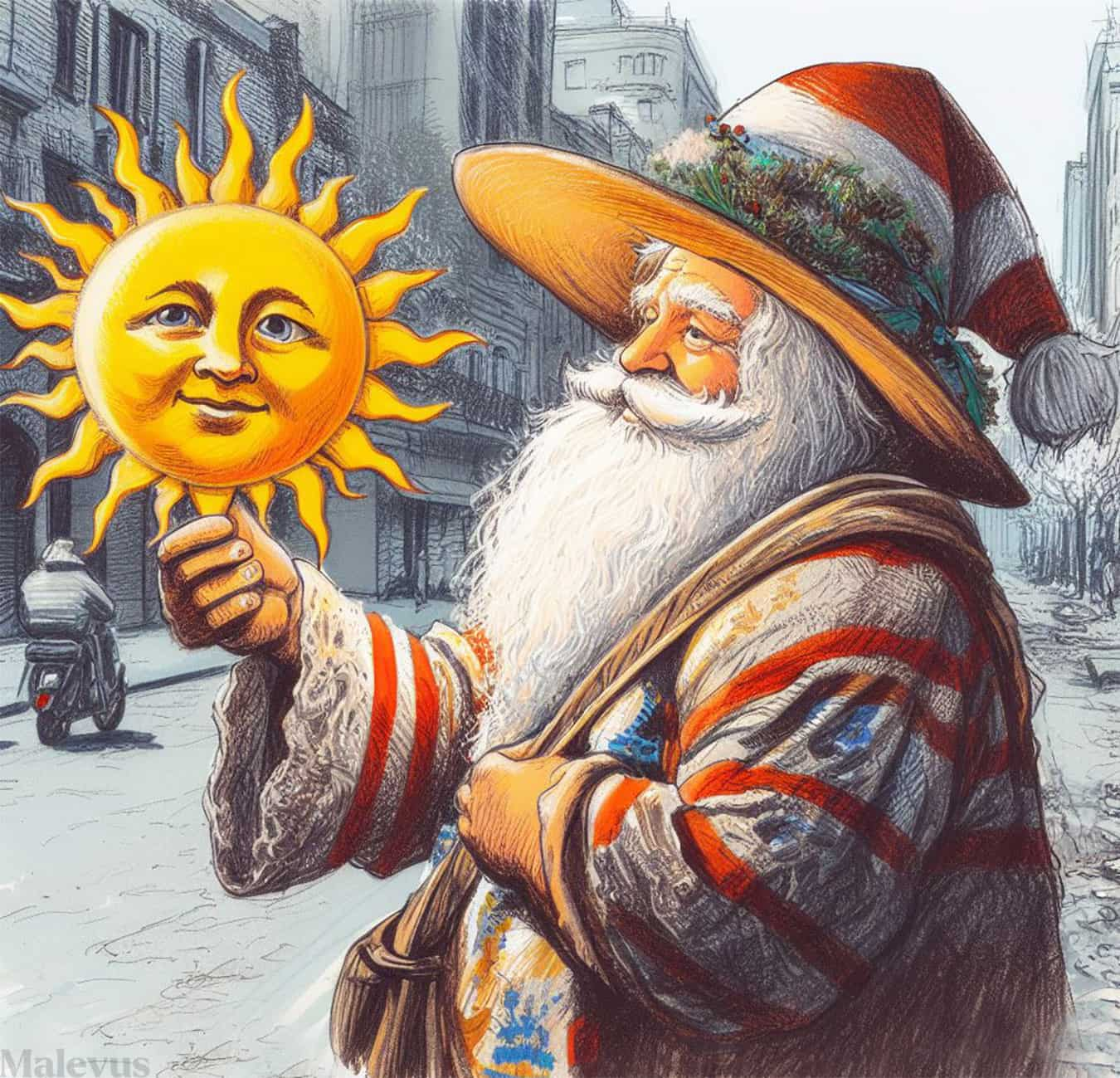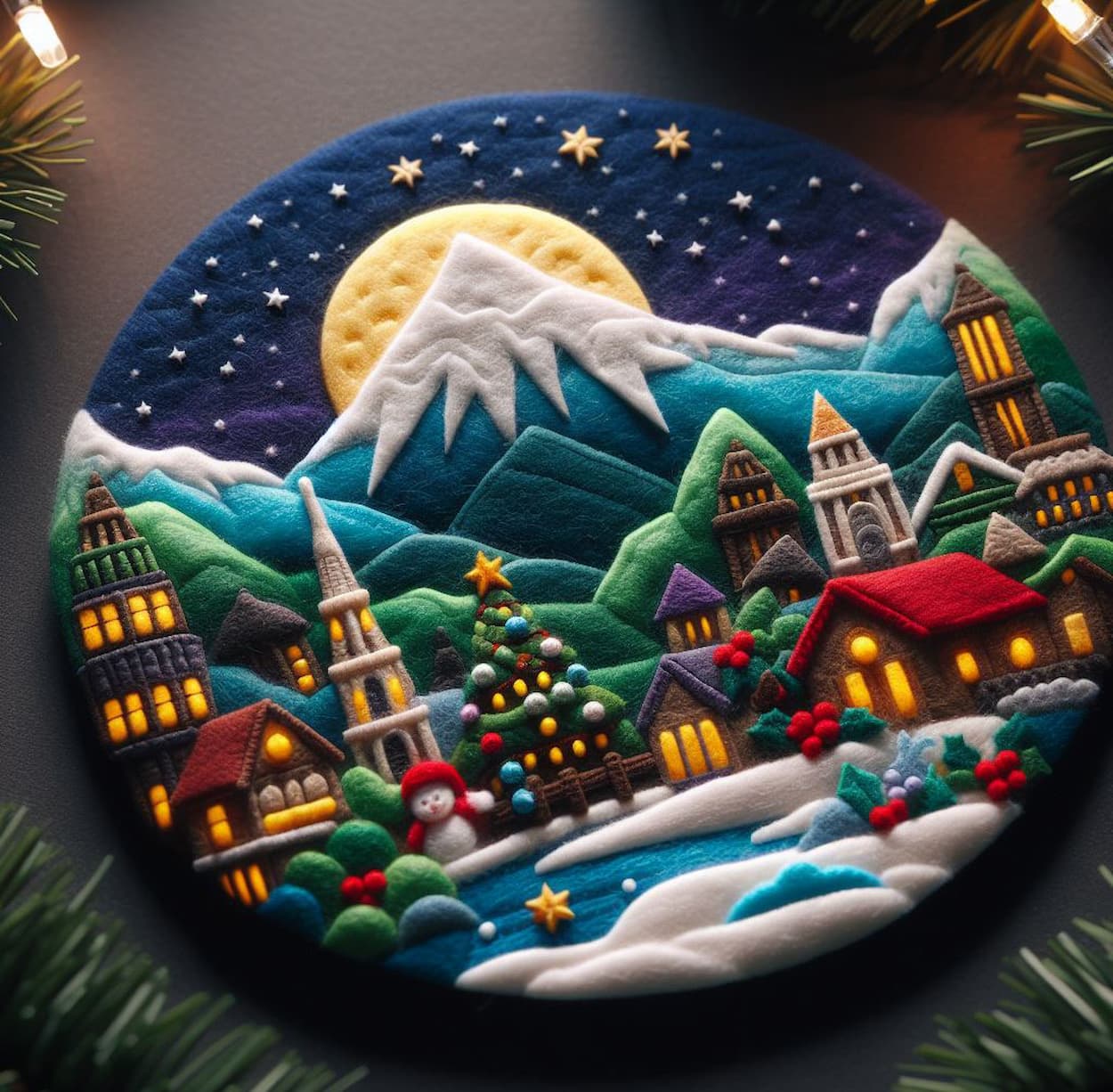Around the globe, there is a wide variety of people who bring Christmas gifts. Baba Chaghaloo brings presents to Afghanistan. Babadimri performs this function in Albania. Armenians celebrate Father Christmas and Father New Year as Gaghant Baba or Kaghand Papa. There is a small angel-like figure in Austria called Christkind. In honor of Grandfather Frost, Azerbaijan celebrates with Őaxta Baba. In Belgium, Flemish speakers celebrate Sinterklaas or Saint Nicholas, whereas French speakers celebrate Père Noël. These are just a few of the many culturally specific instances of Christmas gift-givers from throughout the globe.
Santa Claus and His Counterparts in Other Countries Around the World
Winter folklore characters are figures from folk art in countries that are most active during the winter period. Santa Claus was originally a personification of the cold. In other countries, there are their own New Year and Christmas characters—the counterparts of Santa Claus and Saint Nicholas:
- In Azerbaijan — “Şaxta Baba” (Shakhta Baba, literally “Grandfather Frost,” the same Santa Claus but in blue) and “Qarqız” (Gargyz, Snow Maiden).
- In Albania — “Babadimri.”
- In Armenia — “Kaghand papi,” more often “Dzmer Papi” (literally “Grandfather Winter”) and “Dzyunanushik” (literally “Snow Anush”).
- In Afghanistan — “Baba Chaghaloo.”
- In Belarus — “Svyaty Mikalay,” “Zyuzya,” “Dzed Maroz.”
- In Bulgaria — “Dyado Koleda” or “Dyado Mraz.”
- In Brazil — “Papai Noel.”
- In the United Kingdom — “Father Christmas.”
- In Hungary — “Mikulás” or “Télapó.”
- In Vietnam — “Ông già Nô-en.”
- In Germany — “Weihnachtsmann” or “Nikolaus.”
- In Greece — “Agios Vasilis” (St. Basil).
- In Georgia — “Tovlis papa,” “Tovlis babua.”
- In Denmark — “Julemanden” (literally Christmas Man) or “Yulenisse” (Swedish Julenissen).
- In Egypt — “Papa Noël.”
- In Israel — “Baba Noel” (for Arab Christians).
- In Indonesia — “Sinterklas.”
- In Iraq and South Africa — “Goosaleh.”
- In Iran — “Baba Noel.”
- In Ireland — “Daidí na Nollaig.”
- In Spain and Latin America — “Papá Noel.”
- In the Basque Country, Santa Claus is called “Olentzero.” He wears national woven clothing, a black beret, carries a flask of good Spanish wine, and smokes a pipe.
- In Iceland — “Jólasveinarnir” or “Jólasveinar.”
- In Italy — “Babbo Natale” and “Befana,” who, on Christmas Eve, fly into homes through the chimney and bring gifts to good children, while the naughty ones get only ashes.
- In Kyrgyzstan — “Ayaz Ata,” literally “Grandfather Frost,” “Ayaz Kyz” (Snow Maiden).
- In Kazakhstan — “Ayaz Ata,” literally “Grandfather Frost,” “Aqshaqar” (Snow White).
- In Catalonia — “Pare Nadal.”
- In China — “Shen Dan Laozhen.”
- In Latvia — “Ziemassvētku vecītis” or “Salavecis.”
- In Lithuania — “Kalėdų senelis” (Christmas Grandfather) or “Senelis Šaltis” (Grandfather Frost).
- In Mongolia — Uvlin Uvgun is dressed in a furry coat and a large fox hat, resembling a shepherd. On his side, he has a tobacco pouch, flint, and steel, and in his hands, a long whip.
- In the Netherlands and Belgium — “Sinterklaas” and “Kerstman.”
- In Norway — “Yulebukk” or “Yulenisse.”
- In Poland — “Święty Mikołaj,” “Dziadek Mróz,” or “Gwiazdor.”
- In Portugal — “Pai Natal.”
- In Romania and Moldova — “Moș Crăciun,” very similar to the Russian Santa Claus.
- In Serbia, Montenegro, and Bosnia and Herzegovina — “Deda Mraz.”
- In the USA and Canada — “Santa Claus.”
- In Tajikistan — “Boboi Barfi.”
- In Taiwan — “Sèng-tàn Ló-jîn.”
- In Turkey — “Noel Baba.”
- In Uzbekistan — “Qor bobo” (Snow Grandfather) or “Ayoz bobo” (Grandfather Frost).
- In Ukraine — “Svyaty Mikolay” and “Did Moroz.”
- In Finland — “Joulupukki.” He wears a tall cone-shaped hat, long hair, and red clothing. He is surrounded by gnomes in pointed hats and capes, trimmed with white fur.
- In France and French-speaking Canada — Père Noël, is literally “Father Christmas.” His antagonist is Père Fouettard, a bearded old man wearing a fur hat and a warm traveling cloak. In his basket are hidden switches for disobedient, stubborn, and capricious children.
- In the Czech Republic and Slovakia — “Ježíšek” (Little Jesus), and “Mikuláš.”
- In Chile — “Viejito Pascuero.”
- In Sweden — a hunched grandfather with a knobby nose “Jultomten” and a dwarf “Yulenisse” leave gifts on windowsills.
- In Scotland — “Daidain na Nollaig.”
- In Estonia — Jõuluvana, is similar to the Finnish “Joulupukki.”
Saint Nicholas
Derived from the Germanic-Scandinavian tradition, the name refers to Saint Nicholas of Myra. He served as a bishop in the city of Myra in Asia Minor (modern-day Demre, Turkey) during the first half of the 3rd century. Numerous legends are associated with Nicholas, including stories of him redirecting a shipment of grain intended for Rome to Myra and rescuing the children of Myra from sea robbers.
Since the 17th century, Saint Nicholas has been regarded as the patron saint of children. On his feast day, December 6th (or December 19th in some traditions), children receive gifts. They place their shoes outside the door for Nicholas to place his gifts. However, only obedient children receive gifts, while mischievous ones face punishment with a switch. Saint Nicholas has assistants in this challenging task, such as Knecht Ruprecht in Germany, Schmutzli in Switzerland, and Krampus in Austria and Bavaria.
Christkind
Originally known as “Christkindel” in German, meaning “Infant Jesus,” this figure often appears as a girl or a female angel who brings gifts to children on Christmas. The concept of the Infant Jesus is credited to Martin Luther, who, being a Protestant, did not recognize Catholic saints. Wanting to maintain the tradition of giving gifts to children, Luther replaced Saint Nicholas with Christkind. Instead of December 6th, gifts are distributed on Christmas Day, December 25th.
Until 1900, Catholics celebrated Saint Nicholas on December 6th, and Protestants had Christkind on December 25th. In the 20th century, Christkind became accepted among Catholics, just like Christmas trees and wreaths.
However, Protestants gradually replaced Christkind with the secularized figure of “Weihnachtsmann” (“Christmas Man” or Santa Claus). Today, Christkind is predominantly present in Catholic families. Christkind bestows gifts only upon obedient children, while mischievous and capricious ones are left empty-handed. Unlike Saint Nicholas’s helpers, Christkind does not punish such children.
Santa Claus
Weihnachtsmann, “Christmas Man,” or Santa Claus, is a modern symbolic figure who brings gifts to children on Christmas. It is based on the legends of Saint Nicholas. Santa Claus is portrayed as a friendly old man with a long white beard, a red coat with white fur, a sack of gifts, and a switch. On Christmas night, he rewards “good” children and punishes the “bad,” combining the roles of Saint Nicholas and his punishing assistants.
European immigrants brought legends of Saint Nicholas to America, where “Christmas Man” is known as Santa Claus. The contemporary image of Santa Claus riding a sleigh pulled by reindeer and secretly entering homes through chimneys to leave gifts traces back to the poem “The Night Before Christmas” by American writer Clement Moore, anonymously published in 1823. Starting in 1862, the German-born cartoonist Thomas Nast illustrated images of Santa Claus for “Harper’s Weekly.” In these illustrations, Christmas Man already had a beard and a switch.
The red-and-white attire and standardized appearance of Christmas Man or Santa Claus were established in the 1920s. In 1931, this portrayal became the basis for a Coca-Cola advertising campaign when Haddon Sundblom drew Santa Claus with the face of a retired company employee. Sundblom continued to create new Santa Claus illustrations annually until 1966, solidifying this modern image in the public consciousness. The advertising campaign was so successful that the appearance of Santa Claus is often inaccurately attributed to Coca-Cola.






